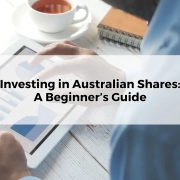How to Choose the Right Investment for Your SMSF
Table of Contents
ToggleSelf-managed superannuation funds (SMSFs) offer an unparalleled level of control, but with this freedom comes the burden of complexity. Choosing the right investment for your SMSF is not a decision to be made lightly. It requires precision, prudence, and a keen understanding of market dynamics. As a Toowoomba Financial Adviser, I’ve seen firsthand how carefully crafted strategies can elevate retirement outcomes. However, missteps-often from inadequate planning or emotional decision-making-can erode hard-earned wealth. In the current economic environment, with inflationary pressures and volatile markets, aligning your investment choices with both your long-term retirement objectives and regulatory obligations is more vital than ever. Sound Financial Planning in Toowoomba must embrace a disciplined framework, guided by a defined investment strategy that reflects the fund members’ risk tolerance, liquidity requirements, and investment horizon.
The SMSF Investment Strategy Requirements
An SMSF must have a written investment strategy, and it’s not just a bureaucratic requirement-it’s the foundation of responsible fund management. This document should clearly articulate how investments will meet the retirement goals of the members, considering diversification, liquidity, and the ability to discharge liabilities. The Australian Taxation Office (ATO) scrutinises this strategy, particularly if it lacks diversification. Trustees must also review it regularly-especially when market conditions shift or personal circumstances change. When done correctly, this strategy becomes the compass for all decision-making. It also ensures alignment with broader financial objectives, regulatory compliance, and a clear rationale behind each investment choice. For trustees seeking expert guidance, working with an Online Financial Adviser can streamline the process and offer insights grounded in both technical knowledge and real-time market awareness.
Risk Profile
Risk appetite is not a generic concept-it varies not only between individuals but across different life stages. Younger fund members might favour a growth-oriented portfolio comprising equities and emerging market assets, whereas older members may prefer capital-preserving strategies involving fixed interest and cash instruments. Determining the fund’s collective risk tolerance involves assessing each member’s goals, timeframe to retirement, and emotional capacity to withstand market fluctuations. For those pursuing Retirement Financial Advice, this understanding is pivotal. An overly aggressive strategy might yield impressive returns during bull markets but can expose the fund to substantial losses during downturns. Conversely, overly conservative approaches may fail to outpace inflation. Striking the right balance ensures that the fund remains resilient and that long-term outcomes are safeguarded.
Diversification
Diversification mitigates risk by spreading investments across asset classes, sectors, and geographic regions. SMSFs that concentrate too heavily in one area-such as a single direct property-often fall short of this principle. While property can deliver consistent returns, overexposure can reduce liquidity and increase vulnerability to market corrections. In contrast, a diversified portfolio might include Australian and international equities, real estate investment trusts (REITs), bonds, cash, infrastructure assets, and alternative investments such as private equity or commodities. A Financial Planning Toowoomba strategy should always be grounded in a diversification philosophy, tailored to the specific goals and liquidity needs of the fund. It’s not just about spreading risk-it’s about enhancing opportunities for consistent, risk-adjusted growth over time.
Asset Classes Explained
Each asset class comes with its own risk-return profile. Equities, for instance, offer capital growth potential but come with market volatility. Bonds provide income and stability, but returns may be modest. Cash ensures liquidity but delivers poor returns in a low-interest environment. Property can generate both rental yield and appreciation, but it lacks liquidity and entails significant transaction costs. Alternative assets-like infrastructure or private equity-can offer higher returns, though they often involve complexity and reduced transparency. Trustees must weigh these attributes carefully. An Online Financial Adviser can assist in aligning the selection of asset classes with the SMSF’s investment strategy, member profiles, and long-term retirement goals, offering detailed comparative analysis and market forecasting where necessary.
Liquidity Considerations for Ongoing Obligations
An often-overlooked aspect of SMSF investing is liquidity-the ability to meet ongoing obligations such as pension payments, administrative costs, and taxation liabilities. A portfolio heavy in illiquid assets like property can result in cash shortfalls, particularly during economic downturns when asset sales may be difficult or unfavourable. Toowoomba Financial Adviser consultations frequently involve recalibrating portfolios to introduce a blend of liquid instruments such as term deposits, cash reserves, or short-duration bonds. Ensuring liquidity is not merely a matter of convenience-it is a statutory requirement, particularly for SMSFs paying retirement pensions. A strategic liquidity buffer allows trustees to weather short-term market volatility without compromising long-term investment positions.
SMSF Investment Rules and Regulatory Compliance
Investing within an SMSF framework requires strict adherence to superannuation legislation and the sole purpose test. Investments must be made for the purpose of providing retirement benefits to members-not for immediate personal or family gain. For example, purchasing a residential property and leasing it to a relative is strictly prohibited. Similarly, loans to members or related parties are banned. The fund must also avoid acquiring assets from related parties unless permitted under specific exemptions (e.g., listed securities or business real property). Non-compliance can result in severe penalties, including the loss of concessional tax treatment. A thorough understanding of these rules, or engagement with an accredited Online Financial Adviser, is essential to prevent costly errors and maintain the fund’s good standing.
Evaluating Direct Property in an SMSF
Direct property investment is popular among SMSF trustees, particularly in regional areas such as Toowoomba. It provides tangible assets, rental income, and potential capital growth. However, property investment involves considerable upfront capital, transaction fees, and ongoing maintenance costs. Additionally, it often requires borrowing via limited recourse borrowing arrangements (LRBAs), which introduce complexity and financial risk. Trustees must ensure that the property is purchased on commercial terms, leased appropriately, and aligned with the fund’s investment strategy. Financial Planning Toowoomba approaches must critically assess whether property investment delivers appropriate diversification, sufficient liquidity, and alignment with retirement goals. While appealing, property should be integrated with a broader asset allocation strategy to ensure overall balance.
The Role of Managed Funds and ETFs in SMSFs
Managed funds and exchange-traded funds (ETFs) offer accessible, diversified exposure to a wide array of asset classes. They are particularly beneficial for trustees seeking professional fund management without the burden of direct asset selection. ETFs, in particular, offer low fees, liquidity, and transparency, with options across domestic and international markets, thematic sectors, and fixed income instruments. Managed funds, while typically more expensive, provide access to actively managed strategies that aim to outperform the market. These instruments are useful tools in constructing a well-rounded portfolio, especially for those seeking broad market exposure without overcomplicating the investment process. As an Online Financial Adviser, I often integrate these into SMSF strategies to deliver a scalable, cost-effective solution tailored to specific retirement goals.
Ethical and Sustainable Investing in Your SMSF
Environmental, social, and governance (ESG) considerations have become central to many investors’ decision-making processes. SMSFs can align with ethical values by selecting sustainable investments that avoid industries such as fossil fuels, tobacco, or armaments, and instead favour renewable energy, social impact funds, and responsible governance practices. Ethical investing does not necessarily compromise returns-many ESG-aligned funds have outperformed traditional benchmarks over recent years. Trustees must, however, ensure that the inclusion of ethical filters still aligns with the fund’s overall investment strategy and risk-return objectives. For those seeking Retirement Financial Advice with a values-based approach, incorporating ESG considerations can enhance engagement and ensure that investment decisions reflect personal principles as well as financial goals.
Reviewing and Rebalancing Your SMSF Portfolio
Markets evolve, personal circumstances shift, and what once was a sound allocation may become misaligned over time. Regular review and rebalancing are essential to ensure that the portfolio remains consistent with the investment strategy. This process may involve selling overweight positions and reinvesting in underweighted asset classes to restore the original allocation. Rebalancing also offers the opportunity to realise gains, harvest tax losses, and respond to economic indicators. Financial Planning in Toowoomba should adopt a disciplined approach to periodic portfolio reviews-at least annually, or when significant market movements occur. This ensures that your SMSF is agile, risk-aware, and positioned to deliver consistent returns aligned with long-term objectives.
Professional Advice
Managing an SMSF is a significant responsibility. Trustees are personally liable for compliance breaches and poor investment decisions. Engaging a qualified SMSF specialist provides a layer of protection and expertise that is invaluable. An Online Financial Adviser can offer remote, real-time guidance while still delivering tailored advice grounded in local understanding-ideal for regional clients. From selecting tax-efficient investments to ensuring compliance with the Superannuation Industry (Supervision) Act, professional advice can make a material difference to your fund’s performance and security. As a Toowoomba Financial Adviser, I routinely work with trustees who initially took a DIY approach, only to find themselves overwhelmed or non-compliant. Collaboration with a financial expert ensures a structured, informed, and confident investment approach.
Conclusion
Choosing the right investment for your SMSF is not a one-time event-it’s an ongoing process shaped by strategy, compliance, risk, and adaptability. It requires the discipline to follow an investment strategy, the wisdom to diversify, and the prudence to seek professional guidance when needed. In today’s complex financial landscape, SMSF trustees must remain proactive, informed, and strategic in their decisions. With proper Financial Planning Toowoomba, and the right investment approach, your SMSF can be a powerful vehicle for wealth creation and retirement security.









